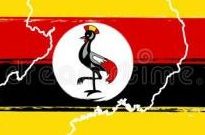Kasese district is located in western Uganda, became a district in 1974 when it was curved out of former Toro district.
The district is composed of 30 rural sub counties, 9 urban town councils and 1 municipality with 3 divisions. There are 195 parishes/wards and 861 cells/villages in the district.
It lies between latitudes 0o 12’S and 0o 26N; longitudes 29o 42’E and 30o 18’E. Kasese district is bordered to the North by the district of Bundibungyo, the North East by Bunyangabu, to the South East by Kamwenge, to the South by Rubirizi and to the West by the Democratic Republic of Congo.
The total surface area of Kasese District is 3,389.8 sq.km of this the total land area is 2,949.2 sq.km, the total area of water bodies is 371.8 sq.km and the total area for wetlands is 68.8 sq.km. About 63% of the land area is occupied by nature and wild life conservation schemes and other government projects such as prison land and irrigation farming. The population is mainly concentrated on the stretch between the Rwenzori Mountains, the lake shores and the Western Rift Valley basin. The population density is over 236 persons per sq. Km and the population growth rate is over 2.45% per annum.
The soils range from clay loams, sand loams to Murram in most areas of the district. Vegetation is mainly open Savannah grass which is, in some places mixed with woodland.
Kasese District is one of the 127 districts that constitute the Republic of Uganda. It was gazetted in 1974 having been curved out of the former Tooro district. Before its creation, there was an uprising by the Rwenzururu Movement demanding among other things, for the independence of Bakonzo and Bamba from Tooro Kingdom. This conflict continued up to the early 1980s.
In the 1980s, the National Army for the Liberation of Uganda (NALU) started another uprising in the mountains, which, though on small scale created instability in the mountainous part of the district. In 1996, there was an invasion of the Allied Democratic Forces (ADF), which affected progress of economic activities up today. In addition to the loss of incomes, during the Rwenzururu Movement, there was a great loss in terms of trained personnel who migrated to other safe districts e.g. in Bushenyi and Mubende.
Kasese district is home to the Banya Rwenzururu. This is a part of the population who are part of the Rwenzururu kingdom. The kingdom has a number of cultural counties, clans and clan heads. The Rwenzururu Kingdom is headed by the Omusinga Charles Wesley Mumbere Iremangoma.
Kasese district is famous for its beauty including the Wild life national parks, the aquatic diversity (Fresh fish lakes, salty lake and rivers falling from the great Mountains of the Moon (Mt. Rwenzori). The Rwenzori ranges including the Margherita and Stanley peaks can be viewed and accessed from the district.
There are a number of mineral resources in Kasese that include: Copper (Kilembe Mines), Cobalt, Cement (Hima), and Limestone (Muhokya). These can further be explored to benefit the people of Kasese. Tousrim is a significant activity within the district given its natural resource endowment including mountains and national parks. National parks in Kasese include: Queen Elizabeth National Park, Rwenzori Mountain National Park and Kibale National Park. Wildlife sanctuaries include: Katwe, Kasenyi, Hamukungu while bird sanctuaries are located on the Kazinga Channels with over 6,000 species.
There is a salt lake at Katwe where salt is mined. The western rift valley also goes through the district.
How to Apply for Kasese District Vacancies
Apply for Kasese District Vacancies
